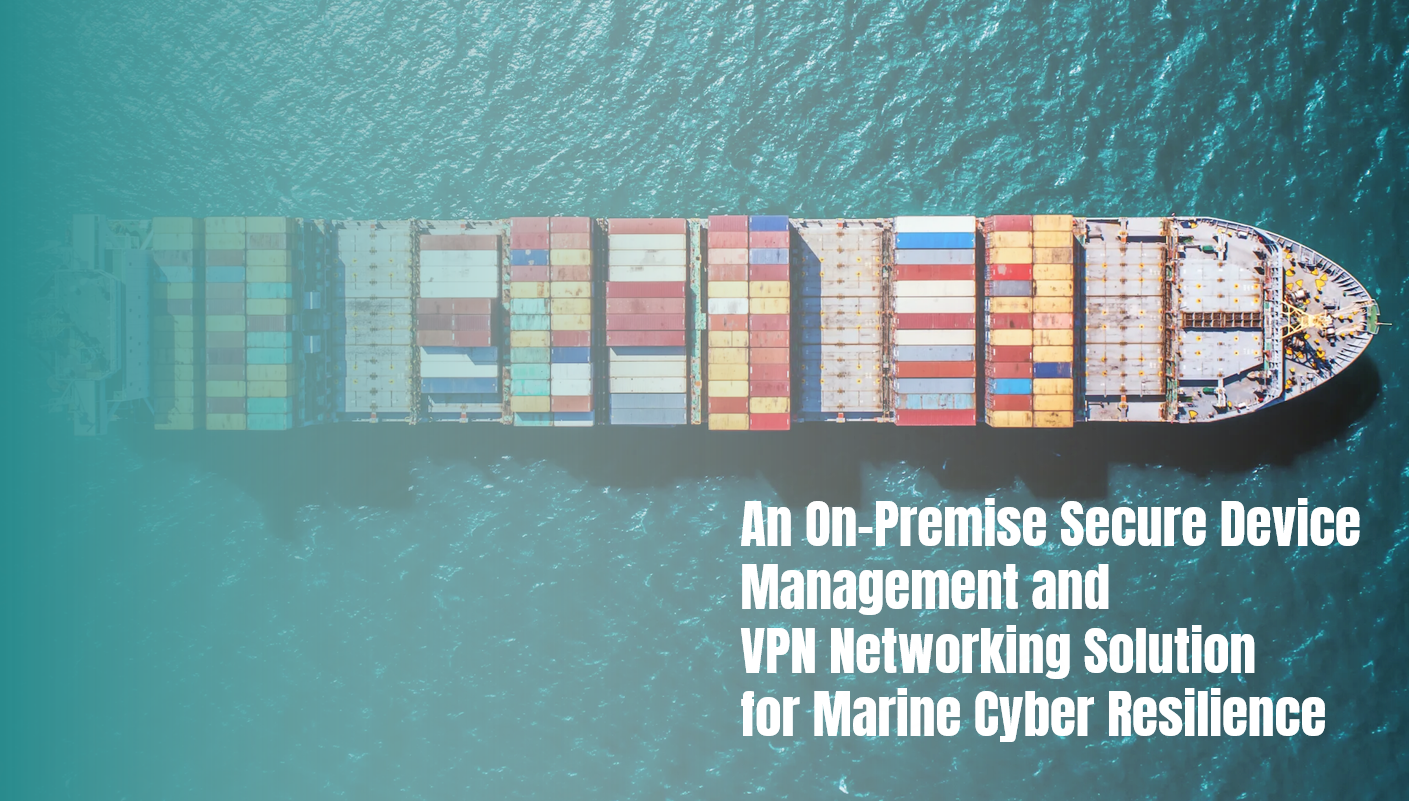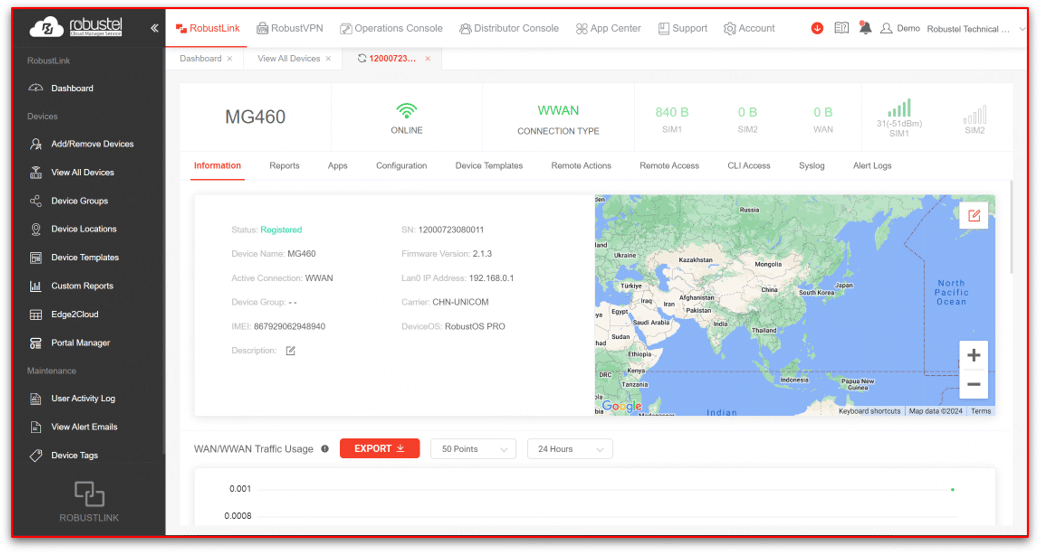Battery Management System (BMS) IACS E26/E27 compliance is increasingly critical in maritime environments where cybersecurity is tightly regulated. This case study shows how a lithium battery solution provider adopted Robustel’s MG460 and RCMS Stack Marine to achieve secure, standards-based connectivity — without extensive in-house R&D
Background:
The maritime industry is rapidly transitioning to lithium battery systems due to their superior energy density, longer lifecycle, and environmental advantages over traditional lead-acid batteries. These systems are becoming essential for powering electric propulsion, onboard automation, and maritime IoT infrastructure — all of which demand reliable, uninterrupted power delivery.
As lithium adoption accelerates, the role of a Battery Management System (BMS) becomes critical. Shipboard BMS platforms must maintain secure, real-time connectivity to onshore cloud platforms to monitor battery health, ensure safety, and optimize performance. In this highly connected environment, compliance with IACS UR E26 and E27 cybersecurity standards is no longer optional — it is a regulatory imperative for vessels operating with digital systems onboard.
Faced with the need to meet these cybersecurity requirements quickly and cost-effectively, a marine lithium battery system provider turned to Robustel. Their goal: enable IACS UR E26/E27 compliance without extensive R&D investment — while ensuring secure remote management of BMS operations.
Challenges:
- Rapid UR E26 & E27 Compliance: The provider urgently needed to ensure their solutions complied with the IACS UR E26 and E27 standards. This required integrating advanced cybersecurity features into their products, while simultaneously maintaining a streamlined and effective compliance process.
- Minimized R&D Efforts: To remain competitive in a challenging market, the company aimed to achieve compliance with minimal R&D efforts, which would result in significant time and cost savings.
Solution - How Robustel Supports Battery Management System IACS E26 E27 Compliance
Confronted with these challenges, the provider chose Robustel's MG460 and RCMS Stack Marine solutions as the ideal response.
Integration of the MG460 Gateway
The MG460 was seamlessly integrated into the vessel’s Battery Management System (BMS), connecting to onboard components via RS485, I/O, and Ethernet. This setup enabled continuous data communication through 4G LTE connectivity near shore, with automatic fallback to satellite networks offshore — ensuring uninterrupted BMS data exchange across varying maritime conditions.
Secure Edge Computing in the Internal DMZ
To comply with IACS UR E27 cybersecurity standards, the provider deployed their control software within the MG460’s internal DMZ. This architecture allowed for secure local data processing, leveraging the MG460’s high-performance computing resources within a protected environment enhanced by embedded antivirus tools. By eliminating the need for additional marine-grade industrial PCs, the solution delivered significant cost savings while enhancing cyber resilience.
Fleet-Wide Remote Management with RCMS Stack Marine
The RCMS Stack Marine platform enabled centralized remote monitoring, firmware upgrades, and configuration control across the fleet. This functionality allowed the provider to maintain high operational uptime, reduce response time, and ensure consistent software and security policy enforcement — all from a cloud-based interface.
IEC 61162-460 Compliant VPN Control
For secure service access, VPN tunnels between the MG460 and maintenance engineers were established via RCMS. To maintain compliance with IEC 61162-460 Ed.3, control over VPN enablement was granted to the vessel’s captain and crew through a physical switch, allowing manual override of remote access for heightened security at sea.
Solution Architecture

Solution Components
MG460 Maritime Cyber Security Gateway
As the world's first product to receive IEC61162-460 (Ed. 3) type approval from DNV as well as 460-Gateway and 460-Wiresless Gateway, the MG460 not only meets the highest cybersecurity standards for maritime navigation and wireless communication systems but also complies with IEC60945, meeting SOLAS vessel standards.
Device & Network Management Platform
Through RCMS Stack Marine, users can monitor the operational status and network connectivity of devices in real time, enabling timely problem identification and resolution. Furthermore, it provides VPN network services that comply with IEC61162-460 standards (direct communication mode), ensuring the security and integrity of data transmission.
Solution Benefits


Comprehensive Device Management:
The RCMS Stack Marine's real-time monitoring and diagnostic tools allowed engineers to troubleshoot remotely, eliminating the need for on-site visits and enhancing the efficiency of global device management.
Support for Secure Development Lifecycle:
As an IEC62443-4-1 certified company, Robustel provided continuous support to meet the secure development lifecycle requirements outlined in the UR E26 and E27 standards.


Enhanced Edge Computing Capabilities:
By utilising the MG460's internal DMZ, the provider avoided the need for expensive external industrial marine PCs, thereby benefiting from robust edge computing capabilities.
Rapid Market Deployment:
The provider quickly attained UR E26 and E27 compliance by incorporating both MG460 and RCMS Stack Marine into their systems, while not undergoing major changes to their products. This helped them rapidly launch a compliant solution to the market with minimal R&D efforts, reducing time and costs.
Want to speak to one of our IoT experts to find out how Robustel can help you build your solution?


.png)
